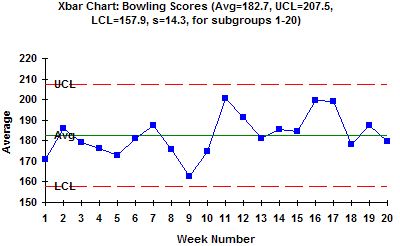Top Quality Management Tips to Enhance Your Business Performance
Introduction
Every business needs to ensure good quality standards. This helps a business in retaining its customers. It maintains their loyalty towards the business. Many a time businesses are blind to the quality management approach. In such cases, businesses suffer a lot in terms of market image. Further, deterioration in the quality leads to a drop in the sales. Following are the tips in quality management for a business. These tips will largely help the business in its growth and expansion. It will help in building loyal customers and in maintaining its market image.
What is Quality Management?
Quality management is the art and science of consistently delivering variation and waste-free products and services. However, quality can be maintained not only in business but also in various other activities and processes. In business, quality management is particularly considered essential. The quality management principles work as a catalyst for a business’ profit and growth. Quality management has evolved over the years and has taken the shape of a subject. Those who ensure the quality of work through the application of the quality management principles go a long way in business.
Continual Improvement in Quality Management System
The essence of quality management lies in controlling with continuous effect. Continual improvement is specifically important in the quality management system. The business environment these days is dynamic, processes and methodologies can become obsolete within a bat of an eyelid. Under such circumstances, quality management principles cannot be implemented only in dire situations. Continual improvement comes into play in business at all times, it ensures quality as per customer needs. The continual improvement approach reduces the chances of deviations in the control chart.
Quality Management Principles which boost organizational performance (ISO: 9001)
1. Customer Focus
Quality management’s main agenda is based on the customer’s interests. It is about what the customer perceives to be quality. Any change or effort is made on the basis of this perception. If this first principle is met with the revenues rise, customer loyalty also sees a significant growth.
2. Leadership
Any quality management project needs good leadership to be successfully implemented. Without a leader’s direction, the project may go haywire. In order to improve the quality, the leader should create a balance between all the elements involved.
3. People’s Involvement
People’s involvement is of utmost importance in any organization or venture. The more the staff feels involved the better their performance output will be. The staff may be the organization’s own or outsourced. However, their existence and effort build the nosiness.
4. Process Approach
Upon following the processes, any business would see exponential improvement in quality. Following the proper process reduces the waste generated. It also eliminates the inconsistency in the production output.
5. Systematic Approach to Management
It is about realizing, understanding and observing interrelated procedures. It is a framework, which adds to the organization's viability and proficiency in accomplishing its targets.
6. Continual Improvement
This is a continuous business objective. Businesses should abide by this principle with continuous effect. It is to see that improvement is taking place at all times and not just once.
7. Factual Approach to Decision Making
An approach based on facts, data and its analysis is essential. This aids in the decision-making process of an organization. Businesses, where decisions are taken blindly, can face huge losses. Any decision in the business has to be calculated prior to its implementation. This calculation must be based on certain decision sciences.
8. Mutually Beneficial Supplier Relations
This principle ensures good relations with a business’ suppliers. It is all about having a good supply chain management system.
Click here to take a closer look at the Six Sigma Combo Certification course
Issues/Problems in Quality Management(Common Mistakes Made by Businesses)
Lack of Teamwork
Discord amongst the team members can lead to a fall in the quality of the output. The discord may take place due to the envy or professional competitiveness. It may also be due to a shortfall in the skills and talents.
Lack of Communication
When the communication is lacking in the organization it compromises the quality of work. Lack of communication can arise due to missing communication channels. The flow of communication in the hierarchy of the organization will be weak.
Miscommunication
Sometimes miscommunication can be costly to an organization, it negatively affects the business in various aspects. It may happen due to a long chain of information flow. Malfunctioning of devices can also lead to this type of a mishap.
Rigid Approach
A rigid approach, when applied to a business, can lead to deviation in quality standards. Businesses at times need to be flexible and adapt to change in order be in line with the market trend.
Lacking Motivation
The motivation in the staff and team members starts to fall; their interest in the work also starts to fall. This leads to a big quality concern. The team members and the staff need to be on their toes to bring out the best quality in their job.
Tips/Steps to improve quality control
W. Edwards Deming is known as the Father of quality management. He broadly laid out the fourteen principles.
He proposed that an organization's sense of duty regarding quality had to originate from the best. A business had to see quality as its single, non-debatable objective.
"Consistency of reason implies that quality choices are not situational," composes the operational master Rebecca A. Morgan. "End of the month quality should be same as the start of the month. It implies that the advantage of the organization isn't relinquished to hit quarterly targets."
1. Track Fails
On the off chance that you will focus on quality, first, you should characterize precisely what quality is. This procedure includes factual quality control. The process is- setting an item's specifications and testing a few units from the creation line. This is to analyze how close they come to the actual specifications. Benchmarks are then set for the product. If a lot of deviation happens from the standard, the assembling process is modified.
Following the quality is truly more difficult in an administrative business. The International Organization for Standardization (ISO) makes important benchmarks.
One approach to measure consumer loyalty by improvising the nature of your process is following what is known as a net promoter score. It was conceived by a Bain specialist named Fred Reichheld. A net promoter score monitors the number of clients who might prescribe a business to their companions. A client who answers 9 or 10 is viewed as a promoter. A client who answers 7 or 8 is viewed as aloof. Some clients give the organization a score of 6 or lower, these clients are considered spoilers. The quantity of spoilers from the number of promoters is subtracted. The resulting number is the net promoter score (NPS Survey).
2. Put Resources to Preparation
Any business without a quality control office is bound to execute poorly. As it projects to the workers that quality isn't the main concern. Rather, quality specialists prescribe that organizations prepare laborers at all levels to search for approaches to enhance quality and to improve issues.
Preparation goes up against a few measurements. First of all, one should set up a work program that trains the laborers in focussing on quality issues, this must happen from the first day at work.
It's imperative that one furnishes workers with a background marked by the organization from the viewpoint of value. Tell them what issues one has had previously. How one remedied these issues, and where the organization remains with respect to its quality objectives. One ought to go over one’s meaning of value in detail, demonstrate to them how one measures quality (looking at the past area). Finally, preparing the workers to see the association between their activities all the more extensively. Their hard working attitude must go with the organization's general execution. It binds singular conduct to a general arrangement of work.
You may like to take a deeper look at the elements of Control Plan here
3. Compose Quality Circles
Sorting out workers into quality circles can be a successful method to recognize and address issues. Quality circles are gatherings of workers who are urged to fill survey forms and prescribe upgrades. All this is with the objective of advancing quality, effectiveness, and profitability. The idea was created by Deming in post-war Japan. This advanced towards the United States in the late 1970s. At a certain point, half of every single expansive enterprise had received quality circles. However, their enthusiasm for it soon blurred.
Quality circles may go by some other name too. These are groups of workers who are given expert advice and obligations, with regards to improving a business. To succeed, specialists say that investment in a quality circle ought to be intentional. Circles should draw individuals from all edges of an organization. The circle should set its own particular plan (as opposed to seeking after an organization proprietor's motivation).
When one has welcomed specialists to join a quality circle, sufficient assets should be given to them. It is essential that one follows up on their suggestions. This is regardless of the gathering's decision being different from what would have been drawn by oneself. Keeping in mind; the motivation behind the activity is not just about tackling a specific issue, but also to draw in workers during the time spent finding concerns. Besides, one ought to track client disagreements and missing items all the time. So if the circle's suggestions don't deliver the outcome, it will be known and acted upon.
4. Having The Correct State of Mind
An excessive number of individuals transform the mission, this enhances quality into something severe. The quality management process must be horrid and should include a ton of cynicism. This thought was not encouraged by Deming. The predominant arrangement of management has a ton of fun in the working environment. Deming was strongly in support of this thought in a meeting in the 1990s. This state of mind isn't really simple to attain. It crosses paths with a portion of the basic administration that we conveniently underestimate.
Quality management is about pointing out deficiency wherever it may be discovered. However, Deming believed that the responsibility of supervisors was to outline the quest for quality as a fascinating, respectable, and beneficial objective. Businesses want to genuinely enhance the quality of their output.
Recognized Models of Quality Management
1. The Control Charts
The control charts are used for maintaining the quality between two benchmarks. These benchmarks are plotted in the graph, they are known as control limits. The quality of output should not go beyond these control limits. They should always stay between these two upper and lower control limits. These benchmarks are two straight lines on the graph.

Image Source: https://blog.kainexus.com
2. X Bar Chart
This is a type of control chart used for quality control. Here, the arithmetic means of successive constant sample sizes are observed.

Image Source: https://www.spcforexcel.com/files/images/xbarbowlgif.gif
3. P Chart
It is a statistical chart for quality control. It observes the ratio of nonconforming units of a sample. Here, the ratio of nonconforming units in a sample size is defined in a different way. It is the ratio of a number of nonconforming units to the sample size, n. The underlying distribution here is a binomial distribution.

Image Source: https://commons.wikimedia.org/
Conclusion
Quality management is a continuous process. Implementing the above mentioned directions would yield an efficient output for an organization. Businesses, irrespective of their scale of operations can always implement these tips. They have been devised over the years by industry professionals. Many companies have reaped benefits by implementing these tips. These companies to this day stand as an example in their respective industries. Quality management is a science of utmost importance in many business and non-business processes.
What’s next? Become a Quality Expert. Register now!
